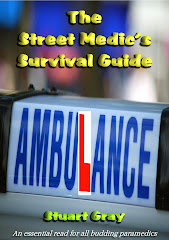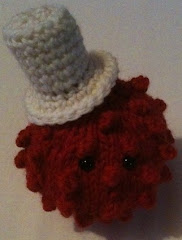Day shift: Five calls; one gone before arrival, three conveyed by car and one by ambulance.
Stats: 1 DOAB; 1 RTC with head injury; 1 Chest pain; 1 Fall with facial injury; 1 ? Sprain.
I’m running a survey on the number of drunks on a bus (DOAB) calls we get as a unit, I want to prove that the vast majority of them – probably all of them – are just sleeping inebriated people. I want to convince our bosses that they don’t require an ambulance and that a solo can investigate it before all the alarm bells are rung. I will suggest we send a car or bike on them and if they are what we suspect them to be, then it will be a simple case of waking them up and getting them off the bus, if they won’t go then the police can help us. These people are a complete waste of tax-payer’s money.
My DOAB of the day was gone before I got on scene, so I quickly cancelled the ambulance. The bus driver was waiting for me and he told me that the guy wouldn’t get off the bus and lay slumped in a seat on the top deck. As the driver sat at his wheel waiting for me to arrive, his slumbering passenger came down the steps and tried to grab the cigarette that was behind his ear. Then he challenged him to a fight. The driver told him to leave the bus and he stormed off down the street.
I conveyed most of my patients today, something I used to do a lot when I worked on the so-called ‘amber car’ if you remember. Hopefully I will be getting back to this sort of work because it saves ambulance resources. The call for a cyclist who’d fallen from his bike as he rode to work, for example, is a perfect ‘load and go’ car job. The MRU desk despatched me on this directly and, because the young man had no more than a bump to his forehead, a cut lip and a broken tooth (all perfectly survivable), he could go up the road to hospital with me in the car. Easy.
If the same call had been sent through the system and picked up by FRED I expect it would have been categorised as Red because of the ‘dangerous body area’, yet when a real human being with clinical expertise is on scene to assess (it was a running call from a MRU colleague), there is no drama.
After I’d handed over the cyclist, I was sent around the corner to a clinic where a 37 year-old man with HIV was suffering chest pain. Well, he wasn’t when I got there, it had been intermittent over the past 24 hours and it was mainly right-sided, so I wasn’t too concerned. He was with a couple of the doctors from the clinic and all his obs, including an ECG had been done for me.
I spent ten minutes chatting to him as I got him to the car and up to A&E. He was initially fearful of the pain, thinking he was having a heart attack but I think he was reassured by my argument that it was the smaller of many other possibilities.
My break was interrupted for a Red1 call, ‘ineffective breathing’. I expect to arrive at a suspended patient if the details are correct on these calls but I also know that people have a funny way of being directed into saying yes or no by stupid leading questions and so I wasn’t surprised at all when it turned out to be nothing more than an elderly man who’d fallen onto his face and who'd bled a bit on the carpet of a posh club.
The only interesting aspect of that call, which cost me sandwich-eating time, was that I got stuck on lights and sirens behind the Prime Minister’s convoy, which is made up of police motorcycle outriders, a couple of Range Rovers containing cops (or SAS) and a couple of heavily secured luxury cars, one of which contains the man himself. Now I know that every one of those cops is ‘packing heat’ and God knows what’s inside the Range Rovers for defence, so I was very cautious as I crept up behind the line of vehicles as it snaked its way south to Downing Street. Every vehicle has its blue lights on but sirens are not used – the motorcycle cops blow whistles to stop traffic and control the route; the idea is to keep the convoy moving and therefore reduce the risk.
I’m at the back of this with my sirens blaring but of course, Red1 or not, the PM isn’t going to pull over and let me past. I could have swerved around the column but I think I would have been seen as a security risk.
The column is going at 20 mph and I am trying to get to my potential cardiac arrest at the same speed, although I know for sure that I could zip past and build up another 20 mph but I decide not to be brave (or stupid) and not to embarrass the Service. What if I’d caused his car to career into a bollard? I would be standing by my vehicle with ten guns pointed at me….
‘What the hell do you think you’re doing?’ the angry cops would ask.
‘Actually, I’m trying to make the target set by the Government’ I would cheekily reply, before being shot for insolence.
My last call of the shift was for a 54 year-old woman who’d fallen earlier in the day and twisted her ankle. This was translated as ‘chest pain and DIB’ by the wonderful computerised system we use to keep ourselves stressed and over budget.
I cancelled the ambulance and took her to hospital myself. It took almost an hour to travel less than three miles because the traffic was so heavy and rain had slowed everyone down. I wasn’t on lights because this wasn’t an emergency – this was a Green call really – a Green call masquerading as an emergency.
On the way I chatted, as I do, to my patient and we had a laugh or ten before arriving at A & E, where she was promptly put in the waiting room to sit for hours before being seen. She asked me if I could come and get her when she had reached old age and was in her last hours. I thought that was a strangely lovely compliment. I said I would but I knew I was lying…being realistic, so did she.
Be safe.
Subscribe to:
Post Comments (Atom)















3 comments:
Well, I think I would have done as you did, and if I failed to meet the ticky box target, I could at least pass the buck on to where it should go.
Mind you, If you had blasted past and put Brown and his arse licker's into some bollards, everyone in the country would be behind you!
You're starting to sound like me with your AMPDS now! I've recently been told that I 'put the patient at severe risk' by asking if they could make their own way to hospital. I've also been told NOT to advise patients with chest pain to sit up. Great! Might as well make it an automated system. Push 1 for chest pain after the tone!
Picking up on your idea for an audit(the DOAB thing). I wonder if you could get in contact with your local university and get a load of healthcare students to do it for you. The module is called IPLU. I've just completed it as part of my Nursing Degree myself, despite the fact I'm an adult nurse from southampton university I had to go with a group of medical students, pharmacy students, etc to the far off city of basingstoke and audit the admissions policy for a neonatal unit. Turns out big actions are being taken on account of our findings.
Post a Comment